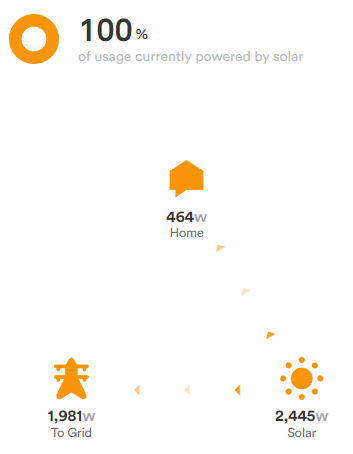Hubby-Eric and I have gone solar.
Eric did the work, looking into companies and finding a deal that would allow us to install panels with no up-front cost. I'm going to say this right out: we are NOT saving money on this at the moment. If we use the panels for a few years, yes, they will start to pay for themselves. But despite no up-front cost, we will actually be paying more out of pocket for awhile. We didn't do this to save money short-term. We waited until we were in a good financial situation.
The panels were installed on February 22, then we went through a month and change of paperwork and permits being approved before the power company arrived last Wednesday and installed the net meter (the power company employee knocked on the door, but I was gaming with headphones on and didn't hear him. It was a surprise when the power suddenly went out as he restarted the system. I need to make a huge sign that says "RING THE DOORBELL, WE MAY NOT HEAR YOU KNOCK!").
Eric turned on the various switches and stuff, but it wasn't until he reread the instructions and got a notice that he figured out how to finish the installation - and our panels went active.
Yesterday I finally worked out how to get the app to view our usage and generation. And now I'm a little bit obsessed with looking at our energy system.
We do not have a battery back-up, nor do we have "sunlight backup", which would protect our house from power loss during the day. We are still dependent on the power grid - the only thing that's changed is that we are now contributing to the power in the system during the day, which hopefully means a little less fossil fuel can be used elsewhere in the system.
Well, maybe not the only thing. We also now have a minute-by-minute view of our power usage, which may allow us to figure out what items in the house are drawing more power than we'd like them to draw, and therefore help us lower waste. We'll have to see how it pans out. Currently, the app is gathering data on our regular habits and trying to determine what sort of power draw is normal for us. In a couple of weeks, it will start giving us more detailed reports, and we can start thinking about changes in our lifestyle at that point.
But I will admit, it's kind of nice to see this on the app:


0 comments:
Post a Comment